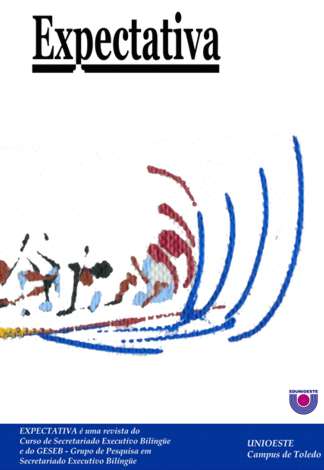RELACIONAMENTO INTERPESSOAL E A PROGRAMAÇÃO NEUROLINGÜÍSTICA (PNL)
DOI:
https://doi.org/10.48075/revex.v4i1.413Abstract
Neurolinguistic programming (NLP) was researched and developed in 1970 by the linguistic John Grinder and the statistic Richard Blander. Its use comes from the existence of the human being. NLP is inserted in many sciences of the human being knowledge, such as: psychology, sociology, linguistics and semiology, the latter, is the theory of the signs. NLP has six basic principles, which are known as its stakes: It is related to the persons, their emotions and levels of abilities. People can be more aware of the things they do through the NLP. Its theories and principles are based on the persons’ systems of beliefs, ideas and values. Rapport, which is essential for a good interaction and communication, has to do with the relationship quality which outcomes are: confidence, responsibility, more attention and respect. Results in NLP have to do with a kind of either task or action you do to accomplish it, being much more aware of planning some strategies to reach the goals. Feedback can show how you are achieving what you want. What makes sense or not, what is coherent and what are the clues to follow the directions. Flexibility – if what you are doing it is not working, do something else differently. Review your options, your emotions, style of communication and perspective to improve the results. NLP is a set of strategies and techniques of communication, expression and effective relationship, which provide an excellent harmony, in the relationship among people. This science helps understand better the structure of our feelings and thoughts. Through these strategies and techniques it is possible to reorganize our comprehension and manners of thinking. Thus we can improve and keep in control our way of life, feelings, attitudes and relationships. Finally NLP works when you can change what other people feel, changing a mental and physical state through communication and expression.Downloads
Published
11-06-2007
How to Cite
CALIXTO, B. J. RELACIONAMENTO INTERPESSOAL E A PROGRAMAÇÃO NEUROLINGÜÍSTICA (PNL). Revista Expectativa, [S. l.], v. 4, n. 1, 2007. DOI: 10.48075/revex.v4i1.413. Disponível em: https://e-revista.unioeste.br/index.php/expectativa/article/view/413. Acesso em: 6 dec. 2025.
Issue
Section
Artigos
License
Aviso de Direito Autoral Creative Commons
Política para Periódicos de Acesso Livre
Autores que publicam nesta revista concordam com os seguintes termos:
1. Autores mantém os direitos autorais e concedem à revista o direito de primeira publicação, com o trabalho simultaneamente licenciado sob a Licença Creative Commons Attribution que permite o compartilhamento do trabalho com reconhecimento da autoria e publicação inicial nesta revista.2. Autores têm autorização para assumir contratos adicionais separadamente, para distribuição não-exclusiva da versão do trabalho publicada nesta revista (ex.: publicar em repositório institucional ou como capítulo de livro), com reconhecimento de autoria e publicação inicial nesta revista.
3. Autores têm permissão e são estimulados a publicar e distribuir seu trabalho online (ex.: em repositórios institucionais ou na sua página pessoal) a qualquer ponto antes ou durante o processo editorial, já que isso pode gerar alterações produtivas, bem como aumentar o impacto e a citação do trabalho publicado (Veja O Efeito do Acesso Livre).
Licença Creative Commons
Esta obra está licenciada com uma Licença Creative Commons Atribuição-NãoComercial-CompartilhaIgual 4.0 Internacional, o que permite compartilhar, copiar, distribuir, exibir, reproduzir, a totalidade ou partes desde que não tenha objetivo comercial e sejam citados os autores e a fonte.


